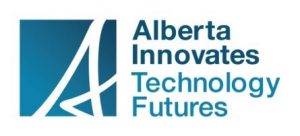
A Cost Assessment of Ecosystem Services Procurement Using Three Mechanisms: Outright Purchases, Conservation Easements, and ALUS
ALBERTA INNOVATES – TECHNOLOGY FUTURES
Read the full report in PDF format, attached.
EXECUTIVE SUMMARY
This project was commissioned by ALUS Canada to compare the costs of procuring ecosystem services from agricultural land using the ALUS program model of annual payments with the costs of alternative procurement through land securement via easements and purchases. The project identifies the key cost drivers underlying the different procurement options.
Procurement costs were estimated using methods from the literature on agricultural economics and ALUS data on actual program delivery costs. In addition an agricultural land value model was developed to estimate the costs of procurement through easements and land purchase. Interviews were used to validate assumptions.
The main difference between the procurement options is in fixed transaction and administration costs as well as ongoing management costs and their distribution between procuring agencies and farmers. Findings indicated that in most cases, ALUS projects carried lower costs for average ALUS project sizes. However the marginal cost of each additional project acre was higher for ALUS than for conservation easements, suggesting that conservation easements may be better suited to conserving large tracts of land. Outright purchase of land was found to be more expensive than either of the other two mechanisms.
The project illustrates the difficulty of comparing these mechanisms. While an ALUS project can happen almost anywhere on an agricultural property, a conservation easement or purchase is bound by legal land boundaries. ALUS can provide more spatial flexibility than typical land procurement methods, enabling a more diffuse model of ecosystem services procurement to occur.
The major conclusion of this report is that at the scale that ALUS currently operates – small, diffuse projects that are incorporated into the working landscape – it generally has lower costs than an easement or purchase would have at a comparable scale. Savings from lower transaction and management costs generally outweigh the costs of an annual payment.
Since ALUS projects do not operate at the same scale as easements and purchases, there are differences in the ecosystem services provided as well as the permanence and risks associated with different securement options. Estimating benefits was outside the scope of the analysis. The cost effectiveness of different procurement options applies to cost per hectare and cannot be assumed to extend to cost per unit of ecosystem service. The key message is that ALUS can enable ecosystem service procurement in areas that cannot be easily accessed using easements and purchases at a comparable or lower cost. Conversely, ALUS projects are likely not ideal to conserve large areas of land as economies of scale make easements more economical. For sensitive ecological areas which require intensive management outright purchase is likely the best option.
In summary each mechanism has strengths and weaknesses and ultimately the best option depends on program goals.
CONCLUSION
This study compares the costs of three different methods of ecosystem service procurement. It was found that the cost of OPs was in each case higher than the costs of CEs and ALUS projects. However the relative cost effectiveness between CE and ALUS depends on project size. When applied at the average size of an ALUS project, CEs are more costly, though the per-acre marginal costs of conservation easements are lower than those of an ALUS projects. Conservation easements have economies of scale and cost effectiveness increases with project sizes.
Wherever possible, this study attempted to be conservative in estimation of conservation easement and purchase costs. Though some farmers accept payments below the ALUS baseline rate, only baseline payment rates were used for ALUS costs. Even so, ALUS was less costly in ten of the twelve comparisons. This suggests that the ALUS model can be a low-cost method for procuring ecosystem services from small diffuse projects that are integrated into working farms.
ALUS can be applied in situations in which a purchase or an easement would be impractical at a much lower cost. The ALUS program compliments the existing mechanisms by enabling smaller, diffuse conservation projects to occur in areas where other mechanisms could not operate. Despite using an annual payment system, by working with farmers on many small projects the ALUS program enables low-cost ES procurement.
ACKNOWLEDGEMENTS
The authors would like to gratefully acknowledge the support of Bryan Gilvesy, Chris Elder, Casey Whitelock, Kim Good, and the farmers and landowners who were willing to share their experiences of the ALUS program.

Recent Comments